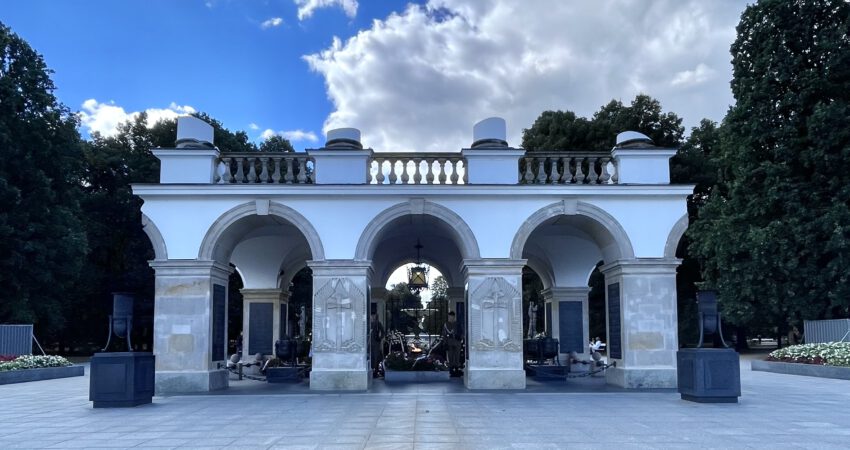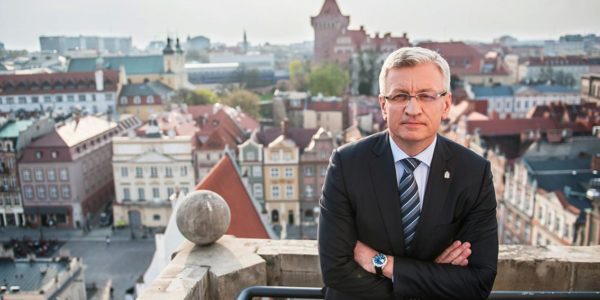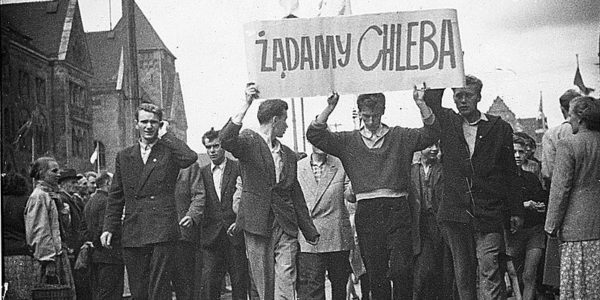By Beata Bruggeman-Sekowska
On November 11, 1918, Józef Piłsudski (Poland’s Chief of State) took over the authority over the Polish army from the Regency Council (in Polish: Rada Regencyjna or Rada Regencyjna Królestwa Polskiego. It was a semi-independent and temporarily appointed highest authority, head of state, in partitioned Poland during World War I). He was appointed its commander-in-chief. Poland regained independence after 123 years. In 1937 November 11 became officially a public holiday. It was celebrated as such only for two years.
Independence Day under German Nazi and Communist oppression
During World War II, under German occupation it was strictly forbidden to celebrate the Polish Independence Day. It also applied to the communist oppressors whose intention was to erase the anniversary of regaining Polish independence from the public memory. In 1945, the National Council (in Polish: Krajowa Rada Narodowa), set up by the communists and pretending to be the Polish parliament, abolished the 11th November anniversary and replaced it for almost 45 years with the “National Day of the Rebirth of Poland” ( in Polish: Narodowe Święto Odrodzenia Polski ) set for July 22, the day on which the only ‘’legal’’ authority of Poland under communist reign was proclaimed – the Polish Committee of National Liberation. (in Polish: Polski Komitet Wyzwolenia Narodowego PKWN) However, this date was not correct, PWKN was established a day before, on July 21st and not in Poland but in Moscow.
Furthermore, the communists tried to overshadow the November 11 by the anniversaries of the Bolshevik Revolution of 1917, celebrated a few days earlier. Communist propaganda emphasized that the October Revolution had a key impact on the reconstruction of Polish statehood, which was an utter nonsense as the Poles who participated in it, such as Felix Dzerzhinsky(in Polish:Feliks Dzierżyński) and Julian Marchlewski, were not supporters of an independent Poland, but of a Polish Soviet republic. Besides, the former was the architect of the Red Terror and also of de-Cossackization. He led the first two Soviet secret police organizations, the Cheka and OGPU, forming state security organs for the post-revolutionary Soviet communist regime. The latter, was appointed during the Polish-Soviet War in July 1920, the Chairman of the Polish Provisional Revolutionary Committee (in Polish: Tymczasowy Komitet Rewolucyjny Polski). If the communists had won it was implied he would have become the head of the communist government in Poland.
Polish church and celebrations of November 11 by the opposition
The Polish Church played a significant role in keeping the memory alive of the Polish Independence Day. On that day, in churches around Poland special services were held. The Metropolitan of Krakow, Cardinal Karol Wojtyła, later known as Pope John II was particularly interested in cultivating the memory of the forbidden holiday.
At the turn of the 1970s and 1980s, the Association of Polish Legionnaires (in Polish: Związek Legionistów Polskich. – a veterans’ and independence organization bringing together veterans of Józef Pilsudski’s Polish Legions)
was informally revived in Krakow. Its members celebrated anniversaries on November 11, enjoying church protection and Wojtyła’s support.
The celebration of the 60th anniversary of regaining independence, organized by activists of the Movement for the Defense of Human and Citizens’ Rights and the Committee for Social Self-Defence KOR, (in Polish: Ruchu Obrony Praw Człowieka i Obywatela and Komitet Samoobrony Społecznej KOR) reached the pages of history books. On November 11, 1978, in Warsaw, a group consisting of two-thousand-members walked through the city streets to the the Tomb of the Unknown Soldier.
Communist restrictions
On November 11, 1979 in Warsaw, just like a year earlier, a service was held in the St John’s Archcathedral in Warsaw and then the participants walked through Warsaw streets to the Tomb of the Unknown Soldier. Speeches were delivered to the gathered audience by oppositionists Wojciech Ziembiński (a veteran of combat in the Polish Armed Forces in the West – he was the main organizer of independent independence celebrations in the Polish People’s Republic.) Andrzej Czuma, Jan Janowski, Bronisław Komorowski, and Nina Milewska. This time, the authorities of the Polish People’s Republic decided to react more decisively.
On December 10, the Committee for Misdemeanours sentenced the four mentioned oppositionists (Milewska was not identified by the Security Service) to terms ranging from 1 to 3 months of imprisonment. After appeals, on January 22, 1980, the verdicts were approved by judge Andrzej Kryże. In his opinion, each of the accused “demonstratively showed disregard for the Polish Nation by being disrespectful and contemptuous of the Polish Nation in a place of special worship of Poles, which is the Tomb of the Unknown Soldier – a symbol of those who died in the fight for regaining independence,” accusing it, among other things, of not being a free and independent nation.”
In the 1980s, after the establishment of the Solidarity movement (in Polish: Solidarność), the communist authorities tried to tolerate independent celebrations, but they were still illegal and often ended in clashes with the communist police: milicja. In Gdańsk alone, approximately 20,000 people took part in the service celebrated in St. Mary’s Basilica, according to the Security Service sources. In Warsaw in 1980, Solidarity celebrations followed a similar pattern as in previous years, but were much more numerous. Compared to 1979, the number of participants more than tripled. According to data from the Ministry of Internal Affairs, the anniversary of November 11 in 1980 was also celebrated in many other Polish cities, among others, in Kraków, Łódź, Radom, Rzeszów, Szczecin, Wrocław, Białystok, Tarnów, Suwałki and Kalisz.
Record attendance was recorded during the independent Solidarity celebrations on November 11 in 1981. According to data from the Ministry of Internal Affairs, they took place in 31 voivodships and were attended by approximately 100,000 people. At the same time, the government tried to regain public trust by organizing official anniversary celebrations. Henryk Jabłoński, chairman of the Council of State (in Polish: Rada Państwa) laid flowers at the Tomb of the Unknown Soldier in Warsaw.
In the following years, the celebrations of November 11 were organized by the opposition and they faced clashes with the militia. During the last, formally illegal celebrations of the 70th anniversary of the Independence of Poland in 1988 in Katowice, Gdańsk and Poznań, participants were attacked by ZOMO (in Polish: Zmotoryzowane Odwody Milicji Obywatelskiej Motorized Reserves of the Citizens’ Militia – units of the Citizens’ Militia established in the second half of 1956,after the Poznań June 1956, to liquidate any form of protests against the communist regime) and SB officers.(in Polish: Służba Bezpieczeństwa Security Service,SB. The secret political police of the Polish People’s Republic operating in the years 1956–1990 and subordinated to the Ministry of Internal Affairs.)
Official recognition
November 11 regained its status as a public holiday in 1989. An act passed by the Sejm of the Polish People’s Republic of the 9th term established this day as the “solemn National Independence Day”, free from work. As written in the preamble: “To commemorate the Polish Nation regaining its independent statehood and the fights of generations of Poles for freedom and independence.”
Image cover: Tomb of the Unknown Soldier in Warsaw ©Central and Eastern Europe Center communications-unlimited.nl
Sources:
https://dzieje.pl/artykuly-historyczne/tak-wygladal-11-listopada-w-prl
https://www.sejm.gov.pl/Sejm9.nsf/komunikat.xsp?documentId=AEF08541DD7E06F4C1258789003712DE





Follow Us!